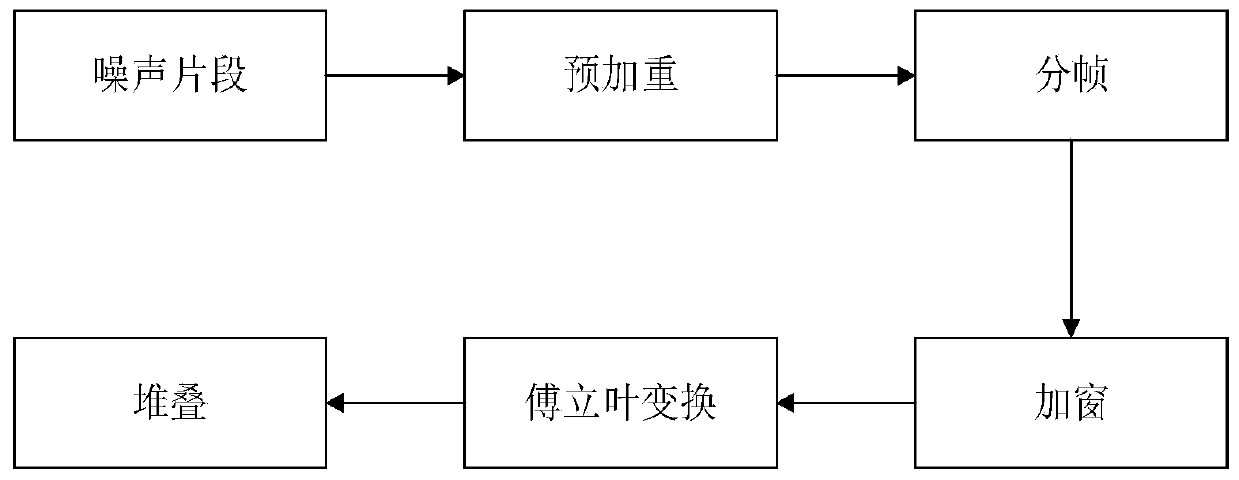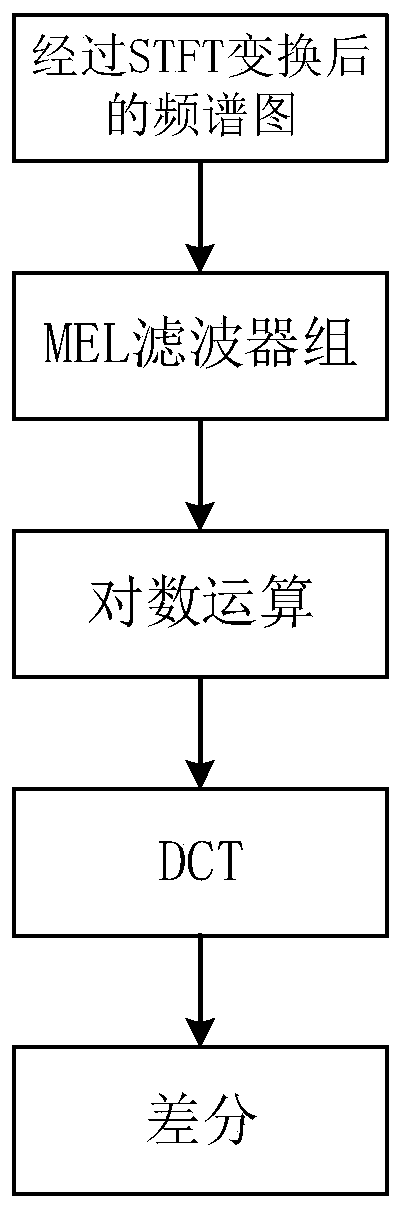Environment noise identification classification method based on convolutional neural network
A convolutional neural network, recognition and classification technology, applied in the field of environmental noise recognition, can solve the problems of slow learning speed of BP neural network, difficult implementation of support vector machine algorithm, limited network promotion ability, etc., to achieve automatic extraction of sound feature information, artificial The effect of less intervention and faster classification
- Summary
- Abstract
- Description
- Claims
- Application Information
AI Technical Summary
Problems solved by technology
Method used
Image
Examples
Embodiment 1
[0055] In this embodiment, a method for recognizing and classifying environmental noise based on a convolutional neural network, the steps of the method are:
[0056] Step 1, use the microphone to collect the noise in the natural environment, and edit it into a noise segment with a suitable duration and a frequency converted to 44.1kHz. Can.
[0057] Step 2, transform the noise segment from a one-dimensional time-domain signal into a two-dimensional frequency-domain signal using the short-time Fourier transform. The principle of the short-time Fourier transform is as follows figure 2 Shown:
[0058] 2-1 First, pre-emphasize the read-in data. The purpose of pre-emphasis is to emphasize the high-frequency part of the sound, remove the influence of noise, increase the high-frequency resolution, and flatten the spectrum of the signal. Pass the data through a high-pass filter with the following formula:
[0059] H(z)=1-kz -1 (1)
[0060] where H z It is called the amplitude...
PUM
 Login to View More
Login to View More Abstract
Description
Claims
Application Information
 Login to View More
Login to View More - R&D
- Intellectual Property
- Life Sciences
- Materials
- Tech Scout
- Unparalleled Data Quality
- Higher Quality Content
- 60% Fewer Hallucinations
Browse by: Latest US Patents, China's latest patents, Technical Efficacy Thesaurus, Application Domain, Technology Topic, Popular Technical Reports.
© 2025 PatSnap. All rights reserved.Legal|Privacy policy|Modern Slavery Act Transparency Statement|Sitemap|About US| Contact US: help@patsnap.com



